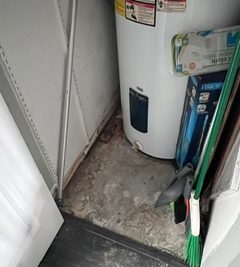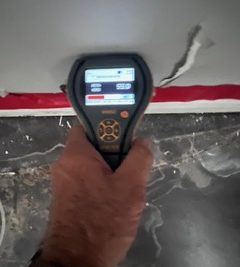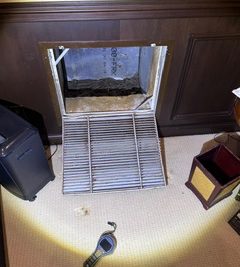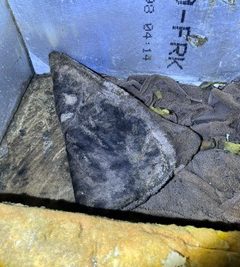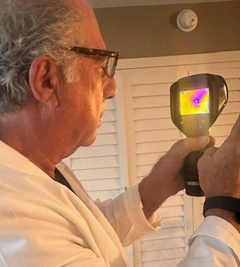Microbial Remediation Protocol
Today’s focus on keeping our environment and health safe is more important than ever. This guide is for those who need to get rid of materials filled with germs. By following these steps, experts in germ cleaning can make sure they work well and safely, making places healthy again1.
This guide helps deal with germs in small or big amounts. No matter the size of the problem, the goal is clear. They want to get rid of all the germs people can see and make the areas clean and safe again2.
We’ve taken tips from top groups like the United States Environmental Protection Agency and more2. By using their advice, those doing the cleaning know they’re doing a top job. This makes the clean-up process as good as it can get.
Key Takeaways
- Comprehensive protocols for safe and effective microbial remediation
- Guidance for competent individuals knowledgeable in microbial removal techniques
- Alignment with industry-leading organizations and their established standards
- Protocols for addressing microbial contamination at various scales
- Emphasis on restoring affected areas to a clean, safe, and healthy condition
What is Microbial Remediation Protocol?
Microbial Remediation Protocol is a detailed set of rules and steps. It aims to get rid of microbial contamination3 from buildings and places. The goal is to help Project Support Personnel deal with harmful microbes. This is to keep people safe and make indoor spaces healthy again3.
Definition and Purpose
This protocol lays out how to identify, contain, and remove mold, bacteria, and other germs3. By using it, Project Support Personnel can lower the risks of microbial harm. They make buildings safer and better for everyone indoors.
Importance in Maintaining Healthy Environments
Following the Microbial Remediation Protocol is key for healthy indoor places3. It stops the bad health effects of germs. This keeps everyone safe, especially those with asthma or weak immune systems3.
The protocol’s job is to delete harmful germs. Doing this makes indoor places great for health. So, the whole community stays well thanks to this protocol.
“The Microbial Remediation Protocol is a critical tool in the effort to maintain safe and healthy indoor environments for all building occupants.”
By sticking to the Microbial Remediation Protocol, places can get clean of germs. This keeps people healthy and happy. Using this protocol is a big part of making indoor areas safe for everyone3. It’s very important for community safety.
Key Terms and Definitions
Knowing key terms is vital for the Microbial Remediation Protocol. Let’s look at what shapes this process.
Critical Barriers
Critical barriers like plastic sheeting are placed on doors and windows. They stop contaminated air from moving to clean areas4. These barriers are crucial for keeping nearby spaces safe from contamination.
Project Support Personnel
Project support personnel work on the microbial abatement. This includes Maintenance staff, contractors, and anyone removing contaminated items4. They help make sure the protocol works well.
Quality Assurance Testing
Before people go back, quality assurance tests are done. The Environmental Health and Safety department approves these tests. They may involve tape samples and air checks4. This ensures the place is safe for people to return.
Susceptible Groups
Some people are more at risk from microbes, like kids and elderly. People with asthma or weak immune systems are included4. It’s important to look after these groups during remediation.
“Bioremediation, as an environmentally friendly process, utilizes microbes for the removal of harmful pollutants from soil, water, and air.”5
Microbial remediation is detailed and combines many elements. It focuses on barriers, involves specific personnel, runs quality tests, and protects at-risk groups. In this way, it’s a complete and successful plan against microbial risks.
Responsibilities and Roles
The EH&S department, led by an Industrial Hygienist, is key in cleaning up microbes6. They make decisions about how to do the work based on the protocol’s directions6. The Industrial Hygienist’s call is final on understanding these rules.
Environmental Health and Safety
Keeping everyone and the area safe is the EH&S’s main job6. They watch over the steps taken to clean up microbes, giving advice to follow the proper regulations6.
Project Support Personnel
The Project Support Personnel do the physical work needed. They make sure everything is in place to follow the cleanup rules6. They also tell others on the job about the cleaning steps to keep them safe from microbes6.
“Microorganisms play a crucial role in the biogeochemical cycles, atmospheric perpetuation, human health, and environmental pollutant cleaning, showcasing their significance in environmental restoration.”6
Good teamwork between the EH&S and Project Support Personnel is vital67. It keeps the environment healthy and safe as the cleanup goes on.
Microbial Removal Protocols
When dealing with microbial contamination, a careful plan is needed. This plan should fit the situation perfectly. Such plans act as detailed guides, showing how to handle different amounts of microbes8.
Creating these guides starts with finding too much of the wrong mold. This then calls for recognized steps for cleaning or removal8. First, experts study the mold. They look at the site, talk to people, draw rooms, and check the climate. They also figure out how and why the mold appeared and take samples8.
While there are no set federal rules for fixing mold, experts have suggested practices. These come from groups like the U.S. EPA and others. Mold cleanup plans are made for places with mold, after a qualified expert confirms it’s there8.
These cleanup plans include talking with property owners and checking the site. They also include testing the air and any material with mold and making sure there’s no asbestos or lead paint. People who check for mold and clean it up need to be trained and keep learning to stay current8. Usually, an outside company does the checks to be fair8.
Water can hurt buildings a lot if not dealt with quickly. An immediate response to water problems is crucial and can save both time and money. It also stops mold from growing9. Sewage spills are very risky, depending on the amount and where it goes. If sewage gets inside buildings, it brings big health dangers9. The longer sewage sits, the worse the damage gets. It can lead to illness and harm buildings9.
How bad the sewage is depends on how much there is, what it’s made of, and how long it lasts. It may contain harmful germs. Lung illness from repeated sewer water exposure in homes is sometimes seen9.
Protocol for Small Contamination Areas
When dealing with small areas of microbial contamination, the steps are clear. These areas are 10 square feet or less10. The cleanup can be done by staff or a specialist10.
Requirements and Procedures
For small contamination areas, wearing protective gear is crucial. This includes N95 masks, gloves, and eye protection10. People should leave the area temporarily. There’s no need for special air filters10. Throw away anything that can’t be cleaned. Clean other things with soap and water10.
- Use of N95 disposable respirators, gloves, and eye protection
- Relocation of occupants from the affected area
- No containment or HEPA-filtered negative air required
- Bagging of contaminated porous materials
- Post-remediation cleaning of non-porous items with a detergent solution
Following these steps, you can safely clean small contamination areas10. Act fast to tackle moisture problems. Moisture is often the cause of mold10.
“Moisture control is the most important strategy for reducing indoor mold proliferation.”10
If you follow these instructions, your building will stay safe and healthy10. This method is key for looking after everyone in the building10.
Protocol for Mid-Sized Contamination Areas
Dealing with mid-sized areas of microbial contamination, which are usually between 10 to 30 square feet, needs attention11. Trained personnel or a contractor can handle this. They follow steps similar to cleaning small areas but with some extras, including using critical barriers for containment11.
Using critical barriers is key in these areas. They stop the spread of microbial contaminants. Temporary walls, negative air machines, and other barriers help keep the affected area isolated. They control the airflow, preventing contamination from moving to clean areas11.
Protection is vital for the team cleaning these areas. They wear full-body suits, respirators, and special footwear. This gear protects them and lowers their contact with contaminants11.
Cleaning and disinfecting these mid-sized areas requires special measures. They’ll use unique cleaning solutions, HEPA vacuums, and wipe surfaces thoroughly. The goal is to make the area safe for everyone again11.
After cleaning, the area must pass quality checks. Tests like air sampling and surface checks confirm if the place is safe. These tests ensure the area is free of harmful contaminants11.
Thanks to the detailed protocol for mid-sized contamination, everyone can stay safe. Property owners, managers, and professionals work together to fight microbial threats. Their efforts protect health and well-being11.
Microbial Remediation Protocol
Requirements for Large Contamination Areas
Large areas, 30 to 100 square feet or more, with microbial issues need expert help12. They should use special gear like N95 masks, gloves, and eye shields. Occupants need to move out during the process. Barriers must be put up and certain air filters are needed. They also bag up infected materials and clean other stuff thoroughly after12.
Old methods for cleaning have problems, so new technologies are being looked for13. Doing clean up where it happened is popular. It saves cash by not moving dirt13. If it’s moved, it can be treated at special places. This can be done in piles or making the dirt wet with special things to help clean it up13.
People want better ways to clean up because old ones have limits13. The idea of making life to clean things is out there. It looks at how bugs eat and grow, but from a tech view13. Computers help make a plan for bugs that clean well13. They think up the bugs that work best together for cleaning13.
FBA helps us plan how bugs clean up messes13. But it’s hard if we don’t know everything the bugs do13. Still, it’s good for guessing how bugs talk and swap chores to clean13. They made a model to see these bugs work together well13.
Scientists use computer tricks and bug info to guess risks in cleaning work13.
| Bioremediation Method | Description |
|---|---|
| In situ bioremediation | Takes less money because it cleans where the problem is without moving big amounts of soil13. |
| Ex situ bioremediation | Can be done by putting dirt in piles or making it wet with special things. Also, cleaning in water with help from special machines13. |
Getting rid of oil dirt by using living things does work, as shown in a study from 199514. For water dirt, we’ve found some good ways to clean up, as shared in a report from 200814. Also, there are ways to stop oils in water from spreading that we’ve learned about in 201014.
After an oil spill, some bugs naturally clean the sandy beaches14. While others study bugs living in oil deep in the sea and how they help14. It’s interesting to know that some can turn bad stuff into good without air14.
Adding more helpful bugs or feeding the ones already there seems to make cleaning faster and better14. Some found special bugs in dirty water that eat gas in a study from 201314. Others showed that bugs are great at cleaning the ground from oil in 201414. And in 2011, a new bug was found to be very good at this cleaning job14.
Protocol for Extensive Contamination
Facing a big area of mold over 100 square feet, it’s wise to bring in experts15. Mold cleanup is now a big deal, with many firms offering it. Some even just work on mold, not fires or water problems15.
Personal Protective Equipment
Dealing with lots of mold means using special gear to keep workers safe. This gear includes special masks, gloves, goggles, and full-body suits15.
Containment and Air Filtration
Experts set up barriers and special air systems to stop the mold from spreading. They follow a method known as the Carolina Protocol. It’s been really successful in the U.S., making sure the cleanup is thorough15.
The Carolina Protocol is all about actually removing the mold, not just killing it. They clean with a strong solution of hydrogen peroxide. This method has worked well on over 200 jobs15.
“The Carolina Protocol has been used successfully by leading mold remediators in the United States and has shown to pass virtually 100% of post-remediation clearance testing.”15
By sticking to these strict rules for handling big mold issues, with the right gear and cleaning methods, experts can make sure the job is done right15.
HVAC Systems and Microbial Contamination
Keeping HVAC systems healthy is vital because they can get filled with things like mold and debris16. We need a special plan to clean out these harmful things for each situation.
Experts must make a plan to clean HVAC systems. They have to get the green light from the Environmental Health and Safety (EH&S) folks first16. This makes sure that everyone follows the rules and keeps the area safe while working.
Cleaning and Disinfection Considerations
When cleaning HVAC systems, many things need thought. Taking out the source of the problem is usually the best way16. Sometimes, we also use special chemicals to fight off germs or stop algae.
Using chemicals safely is super important16. People doing the cleaning must read and follow all safety info on the product labels. This helps prevent accidents and keeps everyone safe.
Sometimes, clients have to agree that they know there are dangers when using certain chemicals16.
Types of Chemical Products
There are many types of chemicals for cleaning HVAC systems, all used for different tasks16. Sanitizers lower bacteria levels and disinfectants kill certain germs16. Fungicides get rid of molds and yeasts, while algaestats stop algae.
Experts can figure out the best ways to clean HVAC systems and keep the air safe16. They know a lot about how these systems work and how to keep them clean.
They make sure to focus on safety and doing a good job. This is key for protecting the people who live or work in the building16.
“Awareness of indoor air quality has increased substantially in recent years, and NADCA is the leading advocate and trusted resource for HVAC system maintenance.”16
| Year | Microbial Remediation Recommendations |
|---|---|
| 1989 | The Bioaerosols Committee of the American Conference of Governmental Industrial Hygienists (ACGIH) released Guidelines for the Assessment of Bioaerosols in the Indoor Environment, recommending cleaning with detergent and HEPA vacuuming for removing biologic contamination and cautious use of biocides for disinfection17. |
| 1992 | The 1992 booklet Repairing Your Flooded Home by the American Red Cross and the Federal Emergency Management Agency did not specifically address mold growth or exposure to dampness-related contaminants17. |
| 1993 | The Canadian Mortgage and Housing Corporation published a mold-cleanup guide for homeowners, recommending water and bleach cleanup, discarding some materials, and using a hypochlorite-based sanitizer17. |
As we learn more about germs in HVAC, top groups give advice on cleaning right17. Following the latest info and tips helps keep everyone in the building healthy and sound1617.
Life Safety Requirements
During projects to remove mold, keeping people safe is top priority18. Mold can be very dangerous, especially for those who are easily affected. It is crucial to follow strict rules for safety. These rules help by making sure everyone knows how to leave quickly in an emergency. They also help in keeping fire safety up to scratch during the cleanup.
Emergency Exits and Fire Safety
It’s essential to mark and block emergency exits from clean areas during mold cleanup18. However, they must still allow people to get out safely. Teams also set up portable fire extinguishers as per NFPA 10-1984 to have them ready if a fire breaks out.
Keeping fire safety systems in good shape is a must during these projects18. This means that emergency exits should be easy to find, clear, and have the right signs and lights. It’s also on the project team to regularly check and fix any issues with the fire extinguishers.
Focusing on keeping everyone safe helps make sure the cleanup goes well18. It protects both the people in the building and those who come to help in an emergency. By doing so, the project area stays safe and under control.
| Life Safety Requirement | Description |
|---|---|
| Emergency Exits | Clearly marked and secured to prevent access from uncontaminated areas while allowing for safe egress. |
| Fire Extinguishers | Portable fire extinguishers provided in accordance with NFPA 10-1984 guidelines. |
| Fire Safety System | Ensuring all emergency exits are easily identifiable, unobstructed, and equipped with necessary signage and lighting. |
Reporting Requirements
The reporting rules in microbial remediation are key for keeping everything clear and following the rules. The Project Support Personnel19 must make sure to tell and get the right permissions from the government. They do this based on the laws and rules of the area and the place’s own policies.
When it comes to reporting on mold, things get detailed. Mold inspection reports are evaluations made by experts who follow the NAMRI Standards of Practice20. These reports show the client’s name and address, when the inspection happened, its cost, and what was checked20. The inspectors also have to report any mold or water damage they see during the check20.
For mold cleanup projects, reporting is even stricter. These reports need to be sent online, and a $25 fee is needed21. If changes are needed, they can also be done online without a fee21. But, if it’s an emergency, you have to pay $25 to send the notification21.
Having detailed paperwork and making sure to report correctly is very important for a cleanup job19. Following these rules helps keep places healthy and protect people’s health.
| Reporting Requirement | Description |
|---|---|
| Mold Remediation Notification | Must be submitted online with a $25 fee21 |
| Amendments to Notification | Can be submitted online with no fee21 |
| Emergency Notification | Requires a $25 fee to submit online21 |
| Mold Inspection Report | Experts must write a detailed report, including the client’s info, when and what they checked, and their findings20 |
Sticking to the rules for reporting is crucial for cleaning up well. It makes sure everyone is on the same page and works properly. All this effort aims to make places safe and guard the health of those who live or work there.
Conclusion
The Microbial Remediation Protocol in this guide helps remove microbial mess safely and effectively13. This is vital for healthy indoor areas and the well-being of those inside22. It promotes methods that are low-cost but don’t harm the soil. And it uses ways like composting to break down pollutants quickly13. Yet, old-fashioned methods are slow, less effective, and smelly13.
New techniques are being looked into, like using synthetic biology and computer tools13. They aim to make cleanups even better. This is key in fixing the damage from industry, farming, and mining that add harmful stuff to our air, water, and soil22. By sticking with the Microbial Remediation Protocol, we’re making strides towards a cleaner, safer planet for everyone23.
The Microbial Remediation Protocol is a crucial guide for fixing microbial remediation protocol and environmental remediation. It shows a full plan for tackling the risks from microbial pollution. With the right steps and the newest solutions, we aim for a better world for all.
FAQ
What is the purpose of the Microbial Remediation Protocol?
The Microbial Remediation Protocol guides those who clean up areas with mold. It lays out how to stay safe while doing this type of work. These steps are crucial for anyone dealing with a mold-infested area.
Why is the Microbial Remediation Protocol crucial?
The Protocol is vital for keeping indoor spaces safe from harmful microbes. It stops the bad health effects that mold and bacteria can cause. This way, it looks after the people living or working in those buildings.
What are the key terms and definitions in the Microbial Remediation Protocol?
The Protocol uses terms like Critical Barriers and Quality Assurance Testing. It also refers to Susceptible Groups and how the Environmental Health and Safety department oversees the process. Industrial Hygienists play a key role as well.
What are the responsibilities of the Environmental Health and Safety (EH&S) department and Project Support Personnel?
The EH&S department sets the rules and checks if they’re followed by hiring an Industrial Hygienist. Project Support Personnel do the hands-on work, following these strict guidelines. They make sure the work is done safely and meets the protocol’s requirements.
How does the Microbial Removal Protocol address different levels of contamination?
The Protocol gives specific steps for cleaning up microbes in different sized areas. It tells workers what they need to protect themselves and how to contain the problem. Whether it’s a small or big area, they know what steps to take.
What are the requirements for remediating microbial contamination in HVAC systems?
Ducts and HVAC systems with mold need a specific plan. This plan is made for each job and must be approved by the EH&S department. It ensures a safe and effective cleanup.
What are the life safety requirements for microbial remediation projects?
There are important rules to keep everyone safe during cleanup. Making sure people can easily leave in an emergency and having fire extinguishers are part of it. These rules come from the NFPA to protect all involved.
What are the reporting requirements for microbial remediation projects?
Project Support Personnel have to follow all legal rules. This means they need to get permission from health authorities and follow laws and policies. It’s their job to make sure everything is done the right way.
Source Links
- https://www.uncsa.edu/faculty-staff-hub/around-campus/facilities-maintenance/environmental-health-safety/docs/indoor-microbial-growth-prevention.pdf – PDF
- https://ecanllc.com/product/mold-remediation-protocol-writing-course-online/ – MOLD REMEDIATION PROTOCOL WRITING COURSE – Online | Environmental Consultants and Affiliates Network
- https://www.ehs.uci.edu/safety/_pdf/microbial-remediation-protocol-reference-guide.pdf – PDF
- https://clu-in.org/bioremediation/ – IN | Technologies > Remediation > About Remediation Technologies > Bioremediation > Overview
- https://www.sciencedirect.com/topics/earth-and-planetary-sciences/bioremediation – Bioremediation – an overview | ScienceDirect Topics
- https://www.ncbi.nlm.nih.gov/pmc/articles/PMC5994547/ – Understanding and Designing the Strategies for the Microbe-Mediated Remediation of Environmental Contaminants Using Omics Approaches
- https://clu-in.org/techfocus/default.focus/sec/bioremediation/cat/overview/ – IN | Technologies > Remediation > About Remediation Technologies > Bioremediation > overview
- https://ecanllc.com/mold-protocol/ – Mold Protocol Writer | Environmental Consultants and Affiliates Network
- https://ehs.umich.edu/wp-content/uploads/2016/08/fdrappe.pdf – PDF
- https://www.ors.od.nih.gov/sr/dohs/Documents/moisture-and-mold-remediation-sop.pdf – Moisture and Mold Remediation ORS and ORF Standard Operating Procedures
- https://www.ncbi.nlm.nih.gov/pmc/articles/PMC10658714/ – Bioremediation of contaminated soil and groundwater by in situ biostimulation
- https://www.epa.gov/sites/default/files/2014-08/documents/moldremediation.pdf – Mold Remediaiton in Schools and Commercial Buildings EPA 402-K-01-001, September 2008
- https://www.ncbi.nlm.nih.gov/pmc/articles/PMC7249858/ – Alternative Strategies for Microbial Remediation of Pollutants via Synthetic Biology
- https://link.springer.com/protocol/10.1007/8623_2015_55 – Protocols for Harvesting a Microbial Community Directly as a Biofilm for the Remediation of Oil Sands Process Water
- https://cleanfax.com/the-carolina-protocol-tm/ – The Carolina Protocol (TM)
- https://nadca.com/sites/nadca/files/docs/2021/nadca_white_paper_on_chemical_applications.pdf – PDF
- https://www.ncbi.nlm.nih.gov/books/NBK215647/ – Prevention and Remediation of Damp Indoor Environments – Damp Indoor Spaces and Health
- https://ors.od.nih.gov/sr/dohs/Documents/moisture-and-mold-remediation-sop.pdf – Moisture and Mold Remediation ORS and ORF Standard Operating Procedures
- https://ehs.georgetown.edu/environmental-affair/mold/ – Mold and Microbial Growth Awareness, Prevention, Guidelines for Reporting and Remediation – Office of Environmental Health & Safety
- https://www.namri.org/standards-of-practice.php – Standards of Practice | National Association of Mold Remediators and Inspectors (NAMRI)
- https://www.tdlr.texas.gov/mld/mldnotifications.htm – Texas Mold Remediation Notification Requirements
- https://www.frontiersin.org/articles/10.3389/fagro.2023.1183691 – Bioremediation of environmental wastes: the role of microorganisms
- https://www.mdpi.com/2227-9717/10/7/1358 – Microbial Remediation: A Promising Tool for Reclamation of Contaminated Sites with Special Emphasis on Heavy Metal and Pesticide Pollution: A Review

